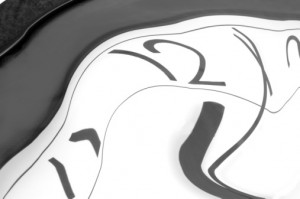Scientific Imagination Run Wild, Part 2
By Nir Menussi: February 4, 2011: Category Inspirations, Networks of Meaning
Integrating Science and Mysticism, Article 5
We continue our survey of the contemporary crisis of science as it exhibits itself in the sphere of scientific imagination.
The Roots of Scientific Imagination (Imagination within Imagination)
 Once we’ve established that imagination plays a key role in the overall scientific worldview, the question arises, where is it coming from? Images don’t pop up from nowhere. They are rooted in the deep-seated myths and symbols of our collective unconscious. This hidden ‘image bank’ from which the rational mind draws its inspiration—the root-images behind the branch-images we see—is the Imagination aspect within the sphere of scientific imagination.
Once we’ve established that imagination plays a key role in the overall scientific worldview, the question arises, where is it coming from? Images don’t pop up from nowhere. They are rooted in the deep-seated myths and symbols of our collective unconscious. This hidden ‘image bank’ from which the rational mind draws its inspiration—the root-images behind the branch-images we see—is the Imagination aspect within the sphere of scientific imagination.
Now, ever since the renaissance, the primary reservoir of images the modern mind has been feeding on is the mythology of classical Greece. We can see this clearly at play within the scientific worldview, which in a very deep sense is a resurrection of the Greek worldview. I’m not referring to the cosmology of the Greeks, of course, from which our own cosmology vastly differs, but to what is referred to as weltanschauung – a world perception.
Greek mythology viewed the world as a closed-up, creatorless system, within which both humans and gods are bound to the unbreachable laws of blind Fate. In the early mythological writings the exploits of gods and men were presented in an optimistic and heroic style; but as the Greek mind matured, the ultimately tragic nature of this worldview came to the foreground in the form of the classical tragedy. The tragic hero wishes very much to break free from his fate, but it is an unshakable tenet of the tragic worldview that he cannot. His failed attempt to do so is what makes him a tragic hero.
This worldview, deeply embedded within the Western mind, explains the modern man of reason’s otherwise odd predilection for a fully mechanistic material universe, in which the laws of causality allow no room for things like free will or the soul. The knowledge gained from physics, biology and neurology could have lead to an updating of the notion of how a spiritual mind interacts with matter (for example, that the mind exists in the form of the neural networks of the brain, that the mind is a third type of dimension in addition to the space and time dimensions, that the mind is the source of the apparent quantum randomness, etc.), but in the vast majority of cases it didn’t. It was eagerly interpreted as doing away with the soul and free will altogether, as proving man is but a helpless—and tragic—animal, whose brain cheats its mind into believing it has free will.
The crisis in this level is the slowly growing realization that Occidental mythology is (a) a particular one, and (b) not a particularly good one.
Above the Stars
An alternative mythology can be found in Judaism. There is a midrash (homiletic story) that says that Abraham and Sarah, the first two patriarchs, back when they were still called Avram and Sarai, went to consult the astrologers of their time as to why they didn’t have children. The astrologers unanimously told them that they’re sorry, but it is ‘written in the stars’ that they are bound to a tragic fate: they are to be barren for life, and nothing can be done about it. When Abraham said this to God, God reproached him, telling him “get out of your astrology – Avram and Sarai indeed cannot conceive, but Abraham and Sarah can! I will change your names and thus your destinies”. The midrash then says that the verse “and He took him outside and said, look now toward the heaven and count the stars”, doesn’t only mean God took Abraham outside of his tent, but also outside of the universe altogether, showing him the heavens from above. From this vantage point, Abraham could see the entire astrological causality, see that it is valid (“Avram and Sarai indeed cannot conceive”), but he could also see that it is limited, that there is a level above and beyond it which could disrupt its deterministic causal chain (“I will change your names and thus your destinies”).
This story beautifully illustrates the difference between the Greek worldview and the Jewish one. Interestingly, it acknowledges the laws of fate held by the Greeks, but points to an additional and superior level of reality beyond them. Translated into today’s concepts, astrology becomes modern science with its various levels of constricting causal systems – physical, genetic, psychological – and Abraham’s ascent to above the heavens becomes a mental transcendence to above these systems – a recognition of a spiritual reality from which we can draw the strength and the inspiration to radically change our world.
Macabre Metaphors
A tendency towards the tragic and the macabre is evident in all levels of how science is told, down to the very metaphors and thought experiments proposed by popular science writers. Why is it, for example, that when a well-known science writer wishes to illustrate the sun’s gravitational effect on the Earth, he has the sun suddenly explode one day, instead of simply vanish, shrink or shift its location? Why does the typical illustration of our minds’ dependence on our brain always involve a mad scientist who has maliciously placed our brain in a vat and is feeding hallucinations into it, and not a well-meaning scientist who saved our brain and is feeding real-life data into it? These sinister choices beg us to reflect on the sort of imagery they use and fill our minds with.
 Another example: the classic illustration used to demonstrate the paradoxical nature of time travel (known as the Grandfather Paradox) is that of a traveler going back in time and killing his own father or grandfather. While convincing, this illustration is neither the only one, nor the best one we could have chosen. An equally convincing illustration would have had the time traveler destroy the time machine which he is later to use. Why was the first example chosen over this one?
Another example: the classic illustration used to demonstrate the paradoxical nature of time travel (known as the Grandfather Paradox) is that of a traveler going back in time and killing his own father or grandfather. While convincing, this illustration is neither the only one, nor the best one we could have chosen. An equally convincing illustration would have had the time traveler destroy the time machine which he is later to use. Why was the first example chosen over this one?
Well, it takes a very cursory knowledge of Western culture (or at least a little Freud), to see why. The reason is that one of its most central and recurring myths is that of a tragic hero murdering his own father. Do you think I’m exaggerating? Then please explain why the second most popular illustration of the paradoxes of time travel, famously used by one of Hollywood’s biggest blockbusters, is of the time traveler’s future mother falling in love with him instead of with his father? Hmmm…
Coming up Next: Scientific Imagination Run Wild, Part 3
http://www.interinclusion.org/inspirations/scientific-imagination-run-wild-part-3/
Scientific Imagination Run Wild, Part 2,






















;)
;)
;)
;)
;)
;)
;)
;)
;)
;)
